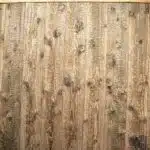As a professional painting contractor, one of the most common questions I receive from clients is whether or not it’s possible to paint vinyl siding. The answer is yes, absolutely! While vinyl siding is known for its durability and low maintenance requirements, it’s not immune to fading or discoloration over time. But with the right preparation and techniques, painting your vinyl siding can give your home a fresh new look that will last for years to come.
Before you start any painting project, it’s important to do your research and understand the proper steps to ensure a successful outcome. In this article, we’ll cover everything you need to know about how to paint vinyl siding, including materials needed, preparation steps, and best practices for achieving a smooth and even finish. Whether you’re looking to update the look of your home or simply want to refresh the appearance of your exterior surfaces, we’ve got you covered. So let’s dive in and get started!
Understanding The Benefits Of Painting Vinyl Siding
Vinyl siding has been gaining popularity over the years due to its durability and cost-effectiveness. However, as time goes by, it can lose its original color or become outdated. This is where painting comes in handy. Painting vinyl siding can not only refresh the look of your home but also increase its value.
One of the benefits of painting vinyl siding is that it improves its durability. Vinyl siding is known for being resistant to harsh weather conditions, but painting it adds another layer of protection against fading and chalking caused by exposure to UV rays. Additionally, paint acts as a shield against moisture, which can lead to mold growth and deterioration of the siding’s structural integrity.
Another advantage of painting vinyl siding is cost-effectiveness. Replacing vinyl siding with new materials can be an expensive project, especially if you’re on a tight budget. Painting the existing vinyl siding allows you to achieve a brand new look at a fraction of the cost. Furthermore, you have more options when it comes to color selection than when buying new vinyl siding.
Painting your vinyl siding can increase your home’s value by enhancing its curb appeal. A fresh coat of paint makes your home stand out and gives potential buyers a good first impression. Moreover, painted vinyl siding lasts longer than unpainted one and requires less maintenance in the long run. These factors make investing in painting your vinyl siding a wise decision for any homeowner looking to improve their property’s value and appearance.
To ensure successful results while painting your vinyl siding, choosing the right paint is crucial.
Choosing The Right Paint For Your Vinyl Siding
When it comes to painting vinyl siding, choosing the right paint is crucial to ensure a long-lasting finish. There are various factors to consider when selecting paint for your vinyl siding, including color and finish.
Choosing the right color for your vinyl siding can make all the difference in enhancing your home’s curb appeal. Keep in mind that darker colors absorb more sunlight, which can cause the vinyl to expand and contract, leading to warping or cracking over time. On the other hand, lighter colors reflect sunlight and reduce heat buildup. Consider the overall style and architecture of your home when selecting a paint color.
In addition to color, it’s important to compare different paint finishes. Vinyl siding requires a specific type of paint that is formulated with special polymers that allow for expansion and contraction without cracking. Look for paints labeled specifically for use on vinyl siding or formulated with acrylic resins. When comparing finishes, consider factors such as durability, ease of cleaning, and resistance to fading or chalking.
- Choose a paint color that complements your home’s architecture.
- Avoid dark colors that absorb more sunlight and may cause warping or cracking.
- Look for paints specifically formulated for use on vinyl siding with special polymers.
- Compare finishes based on durability, ease of cleaning, and resistance to fading or chalking.
- Consider hiring a professional painting contractor who specializes in painting vinyl siding for optimal results.
Transitioning into preparing the siding for painting, it’s essential to properly clean and prepare the surface before applying any paint. Neglecting this step can result in poor adhesion and an uneven finish. In the next section, we’ll discuss how to prepare your vinyl siding for painting to achieve a flawless result.
Preparing Your Siding For Painting
- Before beginning the painting process, it is essential to clean the vinyl siding to remove any dirt, debris, or other contaminants that may interfere with the adhesion of the paint.
- Priming the vinyl siding with a quality acrylic primer is recommended to give the paint a better surface to adhere to, and improve the durability of the paint job.
- Sanding the vinyl siding with a fine grit sandpaper can help to smooth the surface and create a better base for the primer and paint to adhere to.
- Power washing the vinyl siding with a mild detergent is the most effective way to remove dirt and debris from the surface of the siding.
- A light sanding with a fine grit sandpaper will help remove any remaining contaminants from the surface of the siding before applying the primer.
- It is important to wait for the siding to completely dry before beginning any painting process to ensure the paint will adhere properly.
Cleaning
As a professional painting contractor, one of the most important steps in preparing vinyl siding for painting is cleaning. Before applying any fresh coat of paint, it’s crucial to ensure that the surface is free from dirt, grime, and debris that may affect the adhesion of the new paint. The best cleaners for vinyl siding are those that are specifically formulated for this type of material. These products are designed to effectively remove dirt and stains without damaging or discoloring your siding.
One of the DIY cleaning tips we recommend is using a mixture of water and vinegar. Simply mix equal parts distilled white vinegar and water in a spray bottle and apply it to your siding. Let it sit for a few minutes before rinsing it off with a garden hose or pressure washer. This method is effective in removing mildew, mold, and other stubborn stains.
It’s important to note that when cleaning your vinyl siding, you should avoid using abrasive materials such as steel wool or stiff-bristled brushes as they can scratch or damage the surface. Additionally, make sure to test any cleaner on a small area first before applying it all over your siding. With proper cleaning techniques, you can ensure that your vinyl siding is ready for painting and will look its best for years to come.
Priming
After thoroughly cleaning your vinyl siding, the next step in preparing it for painting is priming. Priming is essential as it creates a smooth and even base for the paint to adhere to, resulting in a longer-lasting finish. The best priming techniques vary depending on the type of paint being used and the condition of your siding.
One of the best priming techniques for vinyl siding is using an acrylic primer specifically designed for this material. Acrylic primers are ideal as they provide excellent adhesion and flexibility, which is necessary for vinyl siding that expands and contracts with changes in temperature. Another popular option is using a high-quality oil-based primer that can penetrate deep into the surface of your siding, providing superior protection against moisture and other elements.
When it comes to common priming mistakes, one of the biggest ones is failing to prime before painting. Skipping this crucial step can lead to issues such as peeling, cracking, and uneven color. Another mistake to avoid is using an improper primer or applying too little or too much of it. To ensure that you get the best results possible, we recommend consulting with a professional painting contractor who has experience working with vinyl siding.
By following these tips and techniques for priming your vinyl siding before painting, you can ensure that your project will have a beautiful and lasting finish. Don’t make the mistake of skipping this important step – take the time to properly prepare your siding for painting so that you can enjoy its benefits for years to come.
Sanding
As a professional painting contractor, one of the most critical steps in preparing your vinyl siding for painting is sanding. Sanding helps to smooth out any rough or uneven spots on the surface, providing a clean and even base for the paint to adhere to. Before you begin sanding, it’s essential to choose the right grit based on the condition of your siding.
Choosing grit when sanding your vinyl siding is crucial in achieving an optimal result. For instance, if you have minor imperfections on your siding, using a fine-grit sandpaper will suffice. However, if you have more significant issues like peeling or flaking paint, then you’ll need a coarser grit to remove these blemishes effectively. In addition, it’s essential to select sandpaper with a backing that can withstand pressure and moisture.
When it comes to sanding techniques for vinyl siding, we recommend using light pressure and circular motions. Avoid putting too much pressure as this can cause damage to your siding. It’s also essential to use safety gear like gloves and goggles during the process as particles may fly off from the surface while sanding. After completing the sanding process, wipe down your siding with a damp cloth or power wash it to remove any debris left behind.
In conclusion, sanding is an important step in preparing your vinyl siding for painting as it helps create a smooth surface for better adhesion of paint. Choosing the right grit and applying proper techniques will ensure that you achieve optimal results without causing any damage to your siding. As always, we recommend consulting with professional painting contractors for expert advice on how best to prepare and paint your vinyl siding.
Cleaning And Power Washing Your Vinyl Siding
After preparing your vinyl siding for painting, the next step is to get it cleaned and power washed. This is a crucial part of the process as it ensures that any dust, dirt, or debris is removed from the surface of your siding. Power washing is an effective way to clean your vinyl siding, but there are some tips you need to follow to achieve the best results.
When power washing your vinyl siding, ensure that you use the right pressure settings on your washer. Too much pressure can damage the surface of the siding or even cause water to seep under it. On the other hand, too little pressure may not get rid of all the grime and dirt on your siding. Additionally, you should also use effective cleaning solutions that are safe for vinyl surfaces.
By following these power washing tips and using effective cleaning solutions, you will have a clean and ready-to-paint vinyl siding. However, before you start painting, make sure that you remove any existing paint or stains from the surface of your vinyl siding. This is important as it ensures that any new paint adheres well to the surface without flaking off in future. The next section outlines how to effectively remove any existing paint or stains from your vinyl siding without causing damage to its surface.
Removing Any Existing Paint Or Stains
Before beginning to paint your vinyl siding, it is important to ensure that any existing paint or stains are removed. This will ensure that the new paint adheres properly and looks its best. There are two main methods for removing paint from vinyl siding: physical removal and chemical stripping.
Physical removal involves using a scraper or wire brush to scrape away any loose or flaking paint. This method can be time-consuming and labor-intensive, but it is effective and does not require the use of harsh chemicals. However, if there are many layers of old paint on the siding, this method may not be practical.
Chemical stripping involves applying a chemical solution to the surface of the siding which breaks down the old paint so that it can be easily scraped away. This method is faster than physical removal but requires more caution and safety measures due to the use of chemicals. It is important to follow all instructions carefully when using chemical strippers and wear protective gear such as gloves and goggles to avoid contact with skin or eyes.
In summary, before painting your vinyl siding, it is crucial to remove any existing paint or stains. Physical removal and chemical stripping are both effective methods, with their own advantages and disadvantages. Whichever method you choose, make sure to follow all safety precautions carefully. Once you have removed any old paint or stains from your vinyl siding, the next step is repairing any damage in order to prepare for painting.
Repairing Any Damage To Your Vinyl Siding
- Assessing Damage: When assessing the damage to vinyl siding, it is important to take into account the age and condition of the siding and the extent of the damage.
- Filling Holes: Holes in vinyl siding can be filled with an adhesive or a vinyl spackling compound.
- Patching Cracks: Cracks in vinyl siding can be patched with a flexible vinyl patching material or an acrylic latex caulk.
- Painting: Before painting the siding, it is important to prepare the surface by power washing the siding to remove dirt and debris.
- Primer: A quality primer should be used to ensure the paint adheres to the siding and provides additional protection.
- Paint: A high-quality paint should be selected to provide long-lasting protection from the elements.
Assessing Damage
Assessing damage is a crucial step in repairing any damage to your vinyl siding. Before starting the repair process, it is important to assess the extent of the damage and identify repairs that need to be made. This will help you determine the appropriate tools and materials needed for the job.
When assessing damage, start by examining the areas that have been affected. Look for cracks, chips, or other signs of wear and tear. Check for any signs of moisture or water damage as well, as these can lead to more serious problems down the line. Take note of any areas where the siding has become discolored or faded, as this may indicate exposure to sunlight or other environmental factors.
Once you have identified repairs that need to be made, it is important to prioritize them based on their severity. Start with repairs that are most urgent and work your way down from there. This will help ensure that your vinyl siding remains in good condition and continues to provide protection for your home. By taking a proactive approach to assessing damage and making necessary repairs, you can extend the life of your vinyl siding and save money in the long run.
Filling Holes
When it comes to repairing any damage to your vinyl siding, one of the most common issues is dealing with holes. These can be caused by a variety of factors, from accidental impacts to regular wear and tear over time. Fortunately, there are several effective methods for filling holes in vinyl siding that can help restore its appearance and functionality.
One key consideration when filling holes is using the best fillers for the job. There are several types of fillers available, including vinyl spackling compound, silicone caulk, and epoxy filler. Each has its own advantages and disadvantages depending on the size and location of the hole. For smaller holes, such as those caused by nails or screws, spackling compound or silicone caulk may be sufficient. For larger holes or areas of serious damage, epoxy filler may be necessary.
Another important factor to consider when filling holes is the application technique used. This can make a big difference in how well the filler adheres to the siding and how smooth the finished surface will be. Some tips for successful application include cleaning the area thoroughly before beginning, using a putty knife or similar tool to spread the filler evenly over the hole, and allowing ample drying time before sanding or painting over the repaired area.
In conclusion, filling holes in vinyl siding is an essential part of repairing any damage and maintaining its overall integrity. By choosing the best fillers for each situation and using proper application techniques, you can achieve professional-looking results that will extend the life of your vinyl siding for years to come.
Patching Cracks
As professional painting contractors, we understand that repairing any damage to your vinyl siding is crucial in maintaining its overall appearance and functionality. In addition to filling holes, another common issue that homeowners face is dealing with cracks. Cracks can be caused by a variety of factors such as extreme weather conditions, age, and improper installation. It is essential to address these issues promptly to prevent further damage and maintain the integrity of your vinyl siding.
One effective method for patching cracks in vinyl siding is using caulk. Using caulk can help seal the crack and prevent water from seeping in, causing more damage. When applying caulk, it is important to choose a high-quality product specifically designed for use on vinyl siding. Proper application techniques involve cleaning the area thoroughly before beginning and allowing ample drying time before sanding over the repaired area.
Sanding techniques are also essential when patching cracks in your vinyl siding. Sanding helps smooth out the surface of the repair job, making it blend seamlessly with the rest of your siding. It is important to use a fine-grit sandpaper and apply light pressure when sanding to avoid damaging or scratching the surrounding areas. By following these steps and techniques, you can effectively patch any cracks in your vinyl siding, restoring its appearance and function for years to come.
Covering Windows, Doors, And Landscaping
Now that you have repaired any damage to your vinyl siding, it is important to protect your landscaping and cover any windows or doors that you do not want painted. Landscaping can easily be damaged by paint, so take the necessary precautions to protect your plants and bushes. Cover them with a tarp or plastic sheeting to ensure they are not affected by any stray paint.
Another important step in preparing your vinyl siding for painting is using temporary coverings to protect your windows and doors. This will prevent any paint from getting on the glass or hardware of these fixtures. You can use painter’s tape and plastic sheeting or purchase specialized window and door covers for this purpose. Be sure to also cover any outdoor furniture, grills, or other items that may be in the vicinity of the painting area.
By taking these protective measures before beginning to paint your vinyl siding, you can ensure that everything around it will remain undamaged during the process. Protecting your landscaping and using temporary coverings on your windows and doors is crucial in achieving a professional-looking end result. In the next section, we will discuss applying a primer coat to your vinyl siding as an essential step before painting.
Applying A Primer Coat To Your Vinyl Siding
Primer application is a crucial step in painting vinyl siding, as it prepares the surface to receive the paint and helps ensure a smooth and even finish. Before applying primer, you must clean the vinyl siding thoroughly to remove dirt, grime, and any other contaminants that may hinder adhesion. Once cleaned, wait for the surface to dry completely before proceeding with primer application.
When applying primer to your vinyl siding, make sure you use a high-quality product specifically formulated for use on vinyl surfaces. You can apply it using a brush, roller or sprayer depending on your preference. However, if you choose to use a sprayer, ensure that you have adequate ventilation and that you protect nearby surfaces from overspray. Apply the primer evenly in thin coats following the manufacturer’s instructions.
After applying primer to your vinyl siding, allow it to dry completely before proceeding with painting. The drying time varies based on different factors such as temperature and humidity levels. Generally, most primers take about 24 hours to dry thoroughly. Do not rush this process; otherwise, it may cause the paint to peel off or blister.
- Use a high-quality primer specifically formulated for use on vinyl surfaces.
- Apply the primer evenly in thin coats following the manufacturer’s instructions.
- Allow the primer to dry completely before proceeding with painting.
- Do not rush this process; otherwise, it may cause the paint to peel off or blister.
Once your vinyl siding has been primed and has dried adequately, you are now ready for the next step of spraying or rolling on your vinyl siding paint. This step requires careful consideration of various factors such as weather conditions and choosing an appropriate paint color that complements your home’s architecture. Therefore it is essential for you to keep these factors in mind when undertaking this task so that you can achieve an excellent finish that will last for many years without fading or peeling off easily.
Spraying Or Rolling On Your Vinyl Siding Paint
After applying a primer coat to your vinyl siding, the next step is to apply the paint. When it comes to painting vinyl siding, there are two main methods: spraying and rolling. Both methods have their advantages and disadvantages, so it ultimately depends on personal preference and experience.
Spraying the vinyl siding paint can be a faster method than rolling, as it covers more surface area at once. However, it requires more skill and equipment, such as a sprayer and protective gear. Rolling the paint onto the vinyl siding may take longer but is a simpler process that only requires a roller and tray. It also allows for better control over the application of the paint.
To achieve a smooth finish when painting your vinyl siding, it’s important to follow some tips. First, ensure that your workspace is clean and free of debris before you start painting. Secondly, use high-quality brushes or rollers for an even application of paint. Finally, consider using an extension pole to reach higher areas without having to use a ladder.
Allowing your vinyl siding paint to dry completely is crucial in ensuring its durability and longevity. This step should not be rushed or skipped as it can lead to chipping or peeling of the paint later on. The time required for drying will depend on factors such as humidity levels and temperature. It’s recommended to wait at least 24 hours before touching or cleaning the painted surfaces.
Allowing Your Vinyl Siding Paint To Dry
As exciting as it may be to see your newly painted vinyl siding, it’s essential to allow sufficient drying time before moving on to the next step. Rushing the process can result in unwanted smudging and an uneven finish. Below are some tips for ensuring that your vinyl siding paint dries correctly.
One way to prevent paint smudging is by avoiding contact with the freshly painted surface. Keep children and pets away from the area, and refrain from leaning anything against the siding. Additionally, avoid touching or brushing against the surface until you’re certain that it’s fully dry.
Determining when your vinyl siding paint is entirely dry can be challenging, but there are a few tricks you can use to ensure that it’s ready for the next step. Firstly, touch a small section of the siding gently with your finger. If it feels tacky or sticky, then it’s not yet dry. Alternatively, you can press a piece of tape onto the surface and pull it off after a few minutes. If there’s any paint residue on the tape, then it needs more time to dry.
Now that you’ve allowed ample time for your first coat of paint to dry completely, you can move on to applying a second coat if needed. Remember to follow all manufacturer instructions regarding drying times between coats and always double-check that your surface is clean and free of debris before starting again.
Applying A Second Coat Of Paint If Needed
Now that you have allowed your first coat of paint to dry completely, it’s time to assess the need for a second coat. Applying techniques are essential for achieving a professional-looking finish, and the same goes for painting vinyl siding. If there are any areas that look uneven or patchy, it’s best to apply another coat of paint before moving on.
Before applying a second coat, be sure to check the drying time specified by the manufacturer. Typically, it takes around 4-6 hours for most paints to dry completely. However, this can vary depending on factors such as humidity levels and temperature. Applying a second coat too soon can result in an uneven finish or even cause the first layer of paint to peel off.
Once you’ve given ample time for the first coat to dry and determined that a second coat is necessary, go ahead and apply it using the same techniques as before. Be sure to pay close attention to any missed spots or imperfections that may require touching up later on. Remember: taking your time and being thorough during each step of the process will ensure that you achieve a beautiful finish that lasts for years to come.
Touching Up Any Missed Spots Or Imperfections
Once you have completed painting your vinyl siding, it’s important to take a close look for any missed spots or imperfections. Touching up these areas will ensure that your siding looks even and professional. Here are some tips for touching up any missed spots or imperfections on your vinyl siding.
Firstly, blending techniques are crucial when it comes to touch-ups. You want to make sure that the new paint blends seamlessly with the old paint to avoid any noticeable differences in color or texture. One way to achieve this is by feathering out the edges of the new paint using a brush or roller. This will help blend it into the surrounding area and create a smoother transition.
Additionally, spot painting tips can help you achieve a seamless result. Start by cleaning the area thoroughly with soap and water before applying any new paint. Then, apply a thin layer of primer to help the new paint adhere properly. Finally, use a small brush or roller to carefully apply the new paint, making sure not to overdo it and create an uneven surface.
Now that you’ve touched up any missed spots or imperfections on your vinyl siding, it’s time to move on to removing painter’s tape and protective coverings. These steps are just as important as painting itself because they ensure that your finished product looks clean and polished.
Removing Painter’s Tape And Protective Coverings
After completing the vinyl siding painting, it’s now time to remove any protective coverings and painter’s tape. Before removing them, make sure that the paint has fully dried. Removing the tape too early may result in smudging or pulling off some of the newly painted surface. Slowly peel off the tape at a 45-degree angle while using a sharp razor blade to cut any areas where the paint may have bled through.
Once you’ve removed all protective coverings and painter’s tape, inspect your work for any residue left behind. Use a cleaning solution that is safe for your vinyl siding and wipe away any excess paint or adhesive left behind by the tape. Be careful not to use abrasive materials as it may cause scratches on your newly painted surface.
Protecting surrounding surfaces from overspray is essential during the painting process but removing all coverings and tapes properly is just as important to ensure no damage occurs. By following these steps, you can be confident that you’re leaving behind a clean and polished finish. In preparation for your next project, let’s move onto cleaning up your painting supplies and workspace.
Cleaning Up Your Painting Supplies And Workspace
Now that you have successfully removed the painter’s tape and protective coverings, it’s time to clean up your painting supplies and workspace. Organizing supplies and creating an efficient workspace can save you time and energy in the long run.
Start by gathering all of your painting supplies, including brushes, rollers, paint trays, drop cloths, and any leftover paint cans. Wipe down the surfaces of the tools with a damp cloth to remove any excess paint or debris. Then, store them in an organized manner so that they are easily accessible for future use.
Next, clean up your workspace by removing any remaining drop cloths and sweeping or vacuuming the area. Dispose of any unused paint properly according to local regulations. Taking these extra steps will help ensure that your space is tidy and ready for your next project.
Now that you have completed painting your vinyl siding and cleaned up your supplies and workspace, sit back and enjoy your newly painted home exterior! With proper organization and efficient work practices, you’ll be sure to tackle any future painting projects with ease.
Enjoying Your Newly Painted Vinyl Siding!
Imagine your vinyl siding as the skin of your home. Just like how you take care of your skin, you also need to maintain and protect your vinyl siding from external factors such as UV rays, rain, and dirt. Painting your vinyl siding not only provides an aesthetic appeal but also acts as a barrier for protection. Choosing colors that complement the architectural style of your home is crucial in creating a cohesive look.
Maintaining painted siding involves cleaning it at least once a year with soap and water to prevent mold and mildew buildup. Avoid using pressure washers as they can damage the paint or even cause water intrusion under the siding. Additionally, regularly inspecting for any signs of peeling or cracking is important to address issues before they worsen.
To help you in choosing colors for your newly painted vinyl siding, here’s a table comparing popular color options along with their corresponding meanings and emotions:
| Color | Meaning | Emotion |
|---|---|---|
| Blue | Trustworthy | Calm |
| Green | Health | Relaxation |
| Red | Passionate | Energy |
| Yellow | Happiness | Cheerful |
Enjoying your newly painted vinyl siding involves not just admiring its beauty but also maintaining it for long-lasting protection. Investing in quality paint and professional painting services can ensure better results that will save you money in the long run. Remember that proper maintenance is key to keeping your home’s exterior looking fresh and appealing for years to come without breaking the bank.
Conclusion
Vinyl siding is a popular choice for homeowners due to its durability and low maintenance needs. However, over time, the color may fade or become outdated. Painting your vinyl siding can give your home a fresh new look and increase its curb appeal. Understanding the benefits of painting vinyl siding and choosing the right paint are crucial steps in achieving a successful outcome.
To begin, it’s important to properly prepare your siding by cleaning and removing any existing paint or stains. Touching up missed spots and imperfections will ensure a smooth finish. After removing painter’s tape and protective coverings, cleaning up your supplies and workspace will complete the project.
In conclusion, painting vinyl siding is an effective way to enhance your home’s appearance without breaking the bank. With proper preparation and attention to detail, you can achieve a professional-looking finish that will make your house stand out on the street. Don’t let faded or outdated siding detract from the beauty of your home – take action today!
Image Credits
- “vinyl factory open party 22th @ rising.love roma (live painting)” by OMINO71 (featured)





























